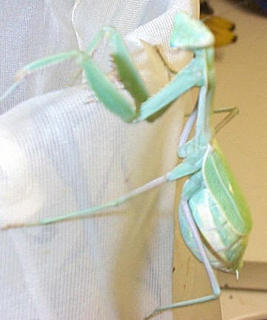HOME::Home-and-Family/Landscaping-Gardening
Mosquitoes in Your Garden? Try Planting These
By Scottie Johnson
If you are a serious gardener, you spend lots of time outdoors. And, for sure, you would rather be tending your plants than swatting mosquitoes.
While there are many things you can do to keep mosquitoes away, there are some plants that will beautify your yard and help repel mosquitoes.
As one more way to keep mosquitoes away from you and your yard, try planting these attractive plants.
HORSEMINT
Horsemint has a scent similar to citronella. Horsemint grows wild in most of the Eastern United States, from Mexico, Texas up to Minnesota to Vermont. It is partial to sandy soils and will grow in USDA Zones 5-10. Native Americans used it as a treatment for colds and flu. It has natural fungicidal and bacterial retardant properties because it's essential oils are high in thymol.
ROSEMARY
This wonderful herb we use for seasoning is also a great, natural mosquito repellant. It has been used for centuries to keep pesky mosquitoes away. Rosemary is a native of the Mediterranean, so it likes hot, dry weather and well-drained soil. It is hardy in USDA zones 8-10, and must be grown as a pot plant in colder climates. If you happen to live in a part of the country where rosemary does not grow, you can get a good quality rosemary essential oil; mix 4 drops with 1/4 cup olive oil. Store in a cool, dry place. When it comes to fresh plant oils as natural mosquito repellants, there is every reason to have the plant in your yard, if they will grow in your area. It is an inexpensive and attractive way to boost the appearance of the landscape and have natural mosquito repellants on hand as well.
MARIGOLDS
Organic gardeners have used marigolds as companion plants to keep aphids away. Mosquitoes dont like its scent any better (and some humans feel the same way). Marigolds are sun-loving annuals that come in a variety of shapes and sizes for almost any landscape. They are quite easy to grow from seed.
AGERATUM
This charming little bedding plant contains coumarin, and mosquitoes detest the smell. It is used in the perfume industry and is even in some commercial mosquito repellants. Dont rub ageratum on your skin, though. It has some other less desirable elements that you dont want to keep on your skin in quantity. Ageratums are annuals, and the come in a muted blue and white that compliments most other plantings.
MOSQUITO PLANTS
There are two types of plants that are called mosquito plants. One is a member of the geranium family that was genetically engineered to incorporate the properties of citronella. Citronella only grows in tropical places, but it is a well known repellant for mosquitoes. This plant was created to bring the repellant properties of citronella into a hardier plant. It will grow where any geranium will thrive. Many have questioned its usefulness as a mosquito repellant, but it is attractive enough to warrant planting for its ornamental value.
The other kind of mosquito plant is agastache cana. Its common names include Texas hummingbird mint, bubblegum mint, giant hyssop, or giant hummingbird mint. As you might guess, hummingbirds are quite attracted to it.
It is a New Mexico native, also found in parts of Texas. It is, in fact, a member of the mint family and its leaves do have a pungent aroma when crushed. In its native habitat, it is perennial, and is usually hardy in USDA Zones 5a-9a. It blooms late summer to early fall, so it catches hummingbirds on their annual migration. The long, medium pink flowers reel in butterflies as well.
CATNIP
One of the most powerful mosquito repellant plants is ordinary catnip. Recent studies have shown that it is ten times more effective than DEET at repelling mosquitoes. It is a short lived perennial throughout most of the United States. It is easy to grow from seed, and quickly reseeds. Aside from its intoxicating effects on cats, the leaves make a very soothing tea.
With all of these plants, the leaves must be crushed to release the aroma. Otherwise mosquitoes cant smell them. And, with rosemary and catnip, you can simply crush a few leaves and rub on your skin and clothing to enhance the effect.
So, next time you are revising your plantings, consider using some of these attractive plants to do more than just enhance the landscape. You can have pretty ornamentals that also drive mosquitoes away.
About The Author
Scottie Johnson is a life long mosquito warrior and freelance writer dedicated to eliminating mosquitoes from her life. She is also an organic gardener. For more information about mosquito control in your home and yard, visit her website at
http://www.mosquito-kill-net.com. Copyright 2004 All rights reserved. Copies of this article may be used on websites and in e-zines provided the resource biography and URL are not removed prior to reproduction.
info@mosquito-kill-net.comArticle Source:
http://EzineArticles.com/ 
















